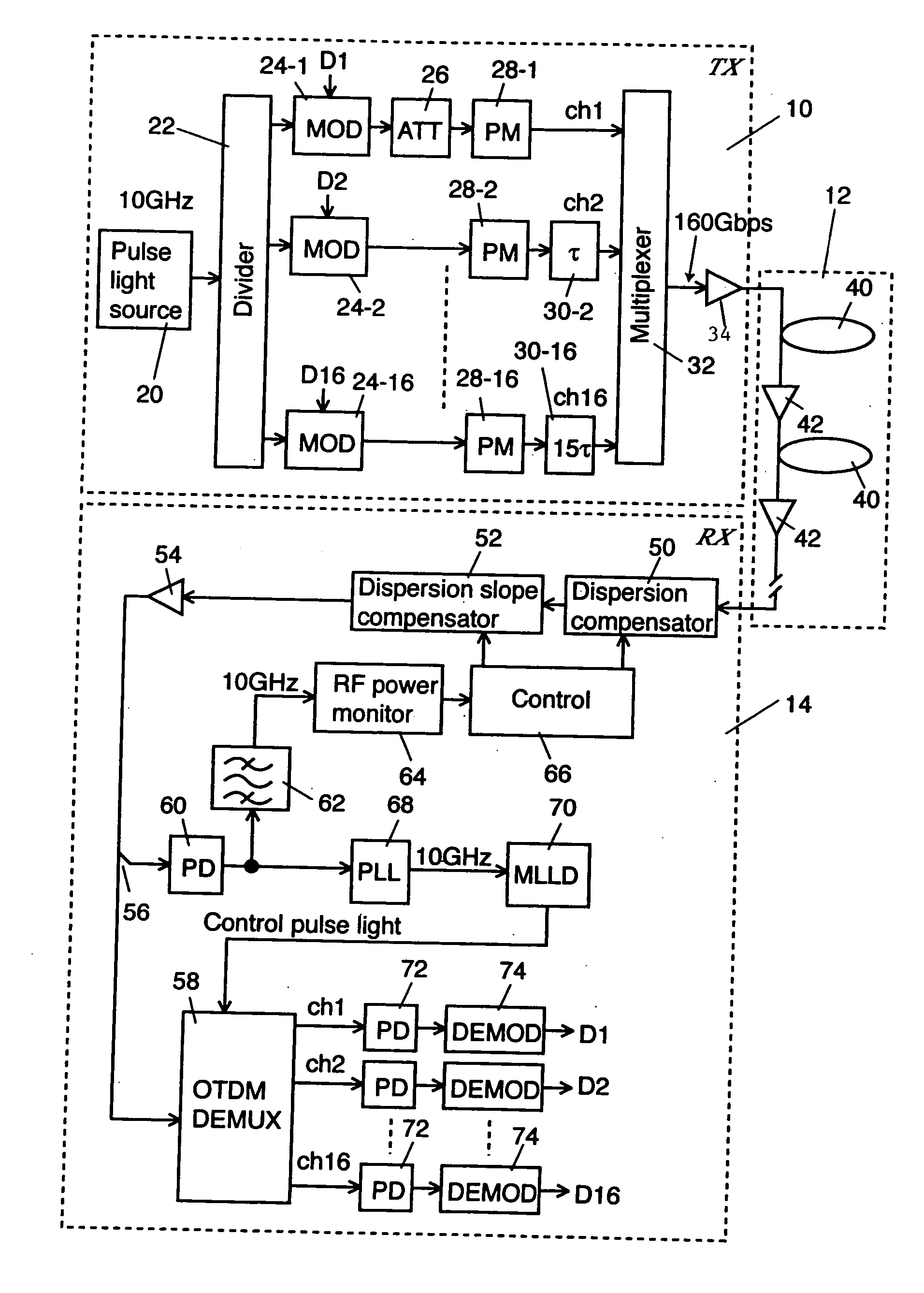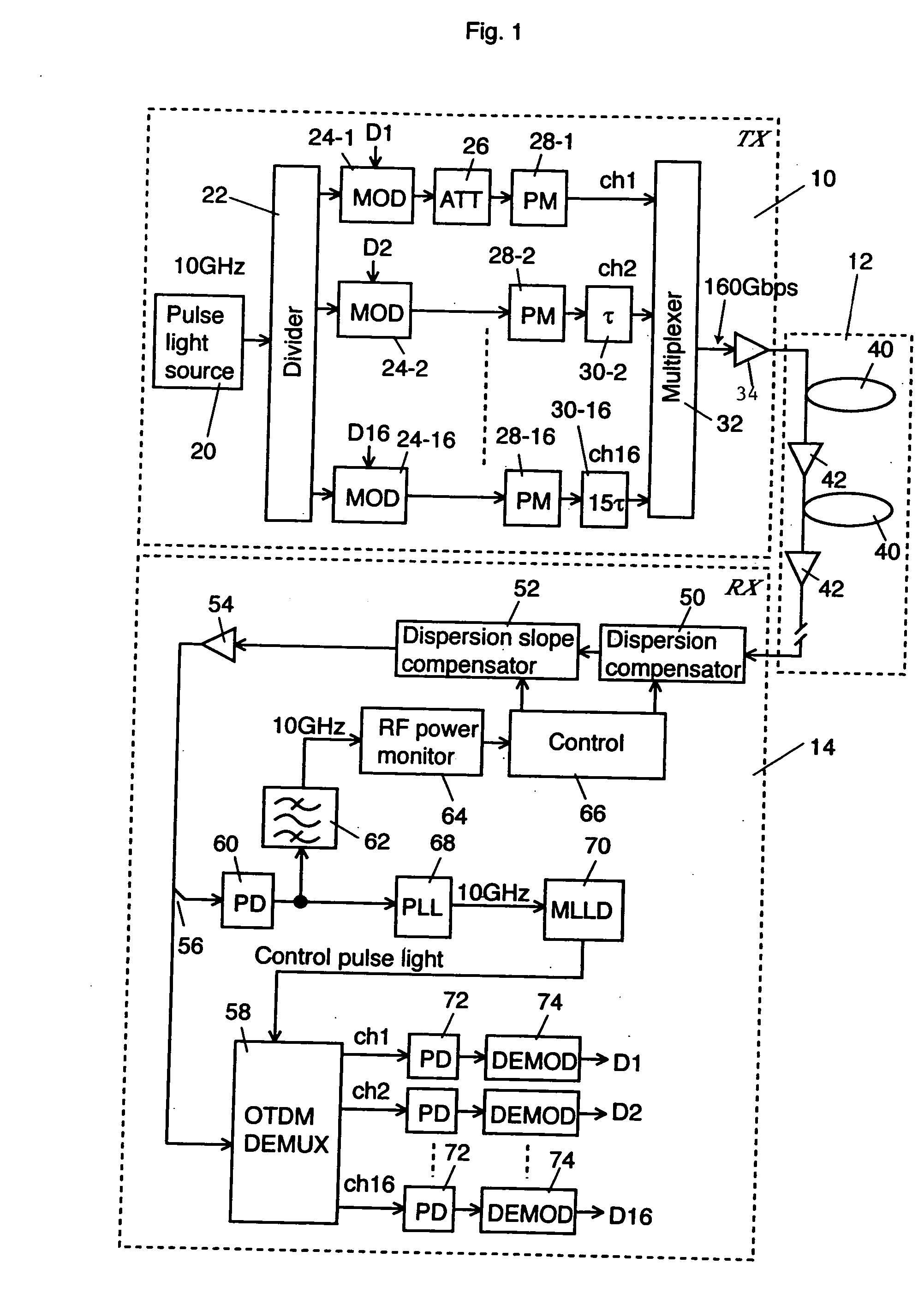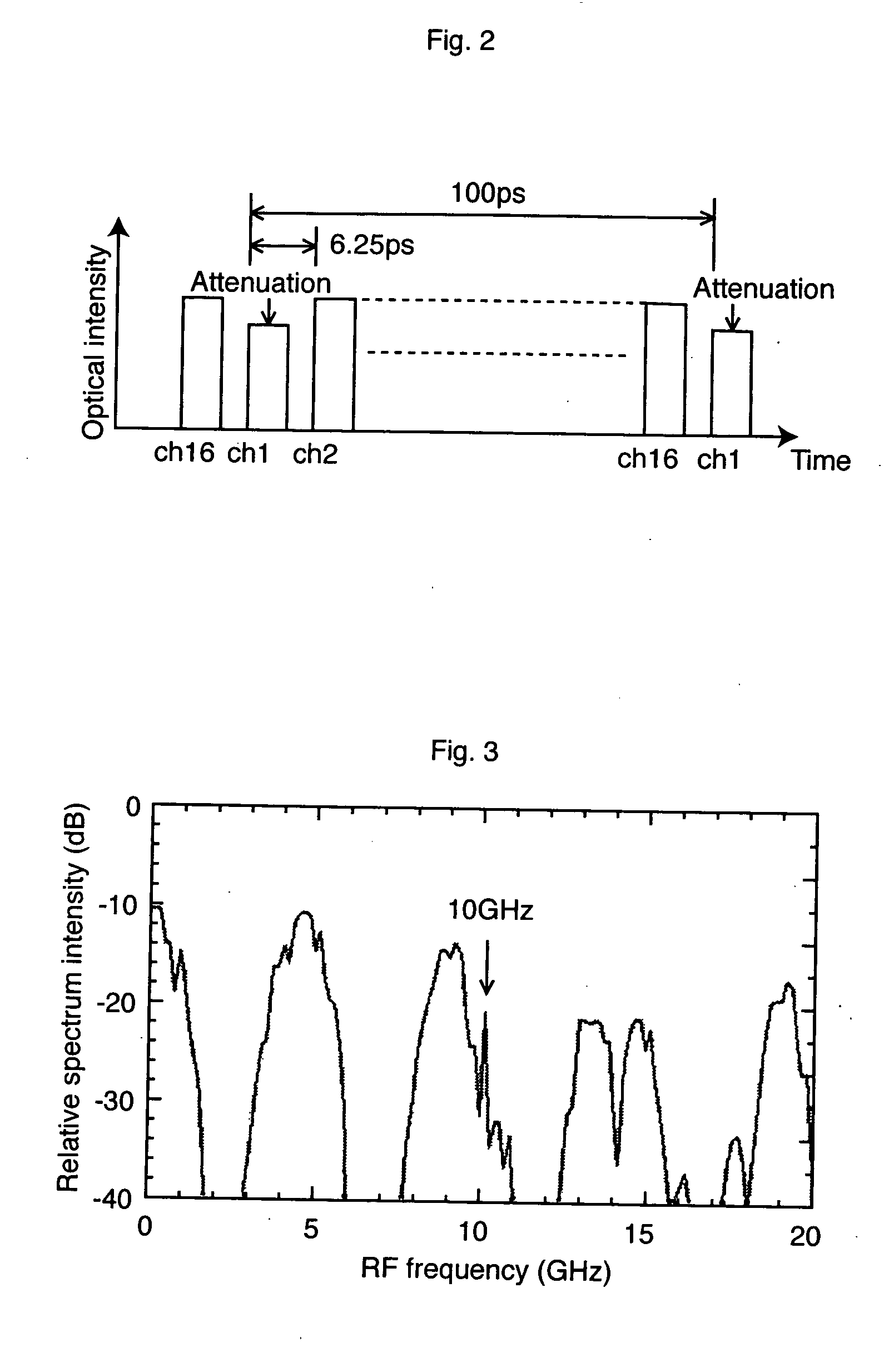Dispersion compensation control method and apparatus thereof and optical transmission method and system thereof
a technology of dispersion compensation and control method, applied in electromagnetic transmission, transmission, time-division optical multiplex system, etc., can solve the problems of inability to accurately monitor waveform distortion, inability to extract clocks to establish synchronization, and deterioration of optical pulse quality, so as to achieve precise chromatic dispersion control and control dispersion compensation
- Summary
- Abstract
- Description
- Claims
- Application Information
AI Technical Summary
Benefits of technology
Problems solved by technology
Method used
Image
Examples
Embodiment Construction
[0032] Explanatory embodiments of the invention are explained below in detail with reference to the drawings.
[0033]FIG. 1 shows a schematic block diagram of an optical transmission system in which an explanatory embodiment according to one embodiment of the invention is applied.
[0034] The optical transmission system according to the explanatory embodiment comprises an optical transmitter 10, an optical transmission line 12, and an optical receiver 14. In this explanatory embodiment, the optical transmitter 10 time-division-multiplexes 16 channels of 10 Gbps optical signals and outputs the multiplexed signals into the optical transmission line 12. Accordingly, an optical signal of 160 Gbps propagates in the optical transmission line 12.
[0035] The configuration and operation of the optical transmitter 10 is explained. A pulse light source 20 outputs an optical pulse having a single wavelength λs and a basic repetition frequency (a base rate) of 10 GHz. An optical divider 22 divides...
PUM
 Login to View More
Login to View More Abstract
Description
Claims
Application Information
 Login to View More
Login to View More - R&D
- Intellectual Property
- Life Sciences
- Materials
- Tech Scout
- Unparalleled Data Quality
- Higher Quality Content
- 60% Fewer Hallucinations
Browse by: Latest US Patents, China's latest patents, Technical Efficacy Thesaurus, Application Domain, Technology Topic, Popular Technical Reports.
© 2025 PatSnap. All rights reserved.Legal|Privacy policy|Modern Slavery Act Transparency Statement|Sitemap|About US| Contact US: help@patsnap.com



